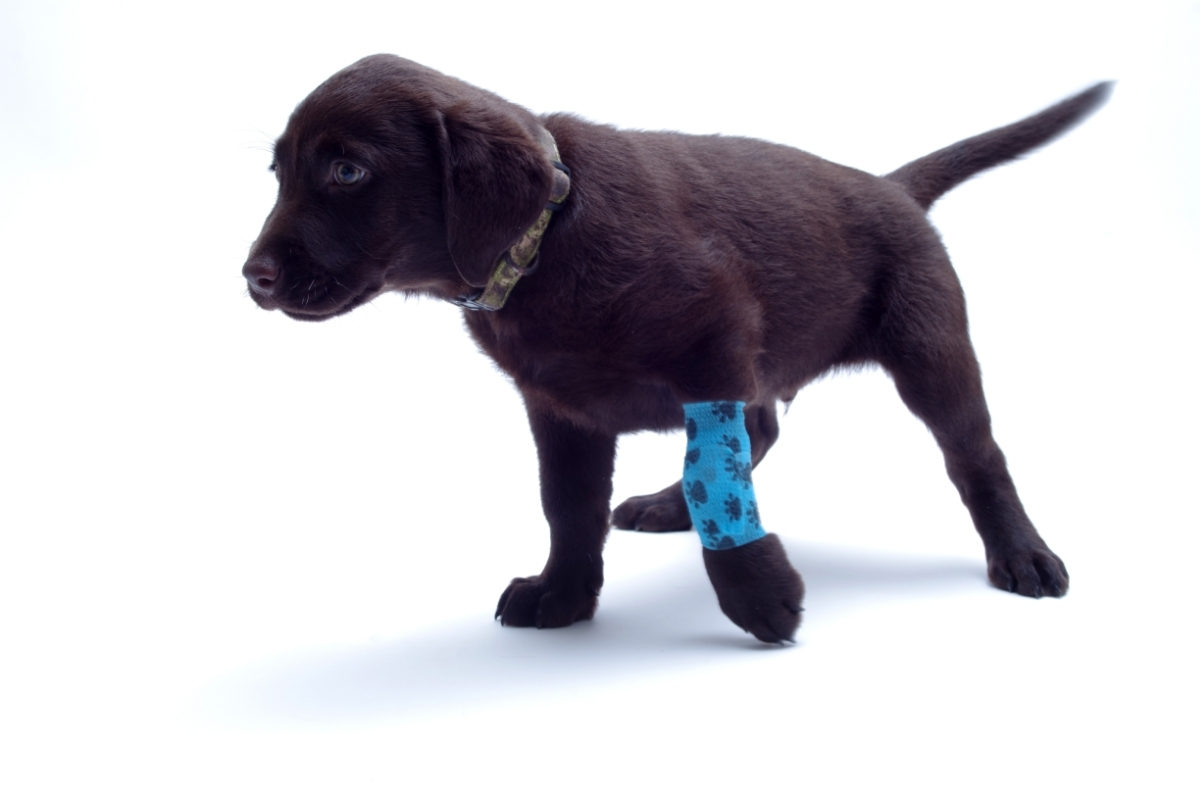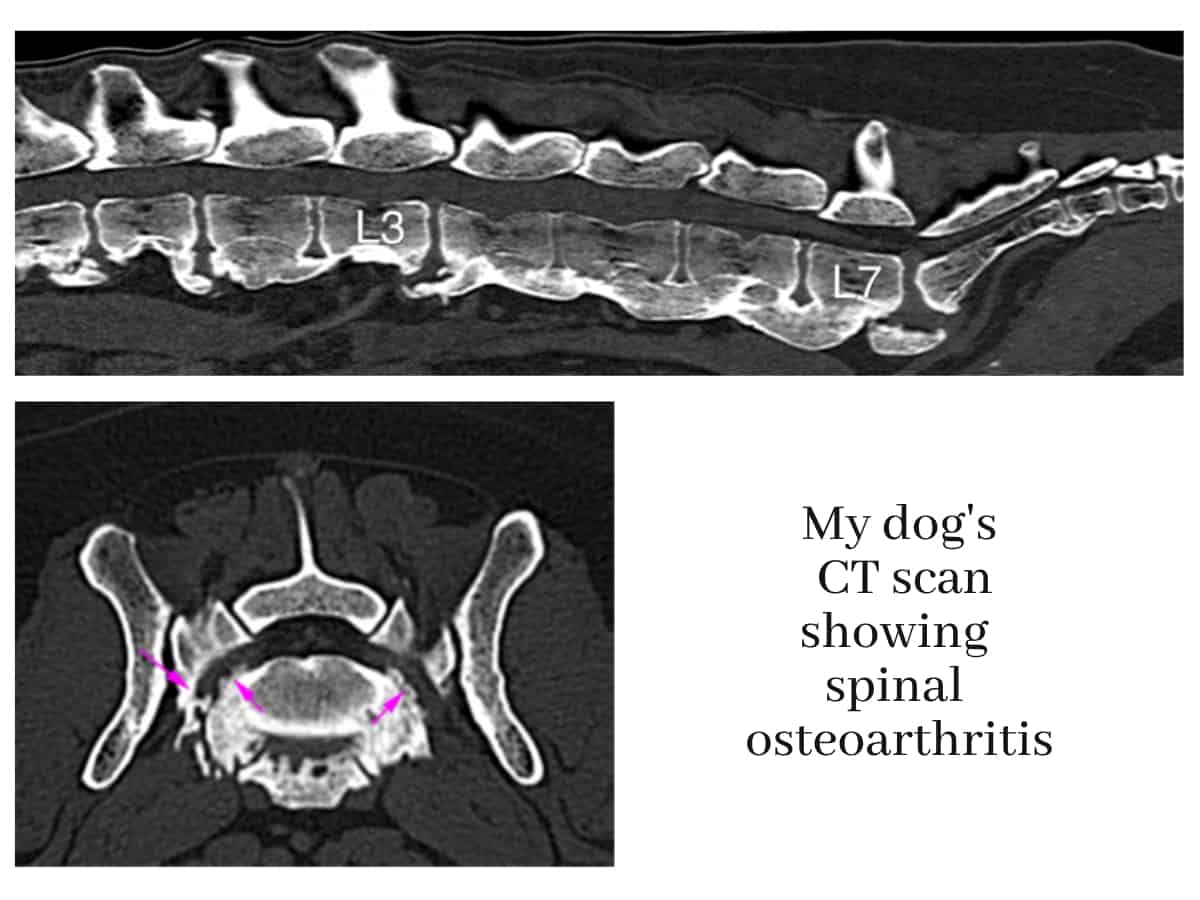Seeing your Labrador limp can be distressing. It’s natural to question whether the cause is a minor issue or something more serious.
Before rushing off to the vet, it’s helpful to have a clearer understanding of the potential reasons. So, what could be causing your Labrador to limp, whether it’s affecting their front or back legs?
Your Labrador might be limping due to several reasons. Common causes include injuries such as sprains or fractures, joint problems like arthritis or hip dysplasia, and paw issues like cuts or foreign objects lodged in the foot. Less commonly, limping can be a sign of more serious conditions such as Lyme disease or cancer.
In this article, we delve deeper into the various causes behind your Labrador’s limp, exploring both common and uncommon reasons.
We’ll guide you through identifying signs that differentiate a minor injury from a more serious health concern.
Additionally, we’ll provide insights on when to seek veterinary care and how to support your Labrador’s recovery.
Let’s get started!

Troubleshooting Your Labrador’s Limp
Limping in dogs is quite common. Limping occurs when your dog cannot walk normally due to pain or weakness. He may walk slowly or with difficulty and will usually favor one leg. Limping may occur on your Lab’s front legs or back legs.
There are two types of limping that your Lab may experience. Some types occur gradually over time, whereas sudden lameness happens quickly, usually after an injury.
Some cases are minor and can be treated at home, whereas others will require professional medical help.
Let’s now take a look at 21 reasons why your Labrador may be limping:
1. Overexertion
Too much of a good thing, such as fetch, intense running, or rough play with other dogs, can leave your Labrador sore and hobbling with a muscle strain. However, most dogs will recover quickly after a couple of rest days.
2. Injury To Paw
Check your dog’s paws for foreign bodies, such as a thorn, a piece of glass, or a nail, as these can cause lacerations. Look out for your Lab incessantly licking his paw.
Burns caused by scorching sidewalks or frostbite can also cause your Labrador to limp.
Get your dog some booties or paw protectors in extremely hot or cold temperatures. These XSY&G Dog Boots from Amazon will do just the trick, as they’re made from high-quality leather with anti-slip soles.
Note: Clicking the above link(s) will take you to Amazon or an online store where we have an affiliate relationship. If you make a purchase, we may earn a commission at no additional cost to you.
3. Toenail Injuries
Examine your Labrador for ingrown or overgrown toenails, as these can cause discomfort and pain when they dig into the skin. My dog once had a dewclaw injury, so make sure you also keep these trim.

4. Insect Sting or Animal Bite
Stings and bites can cause limping. Your Lab may raise its paw if stung by a wasp or bee. Bites from other animals can cause injury and also lead to infections.
5. Fracture
A broken leg should be suspected if the limping occurred suddenly. Broken bones may not always be visible. Your dog won’t be able to bear any weight down on a fractured bone.
6. Sprain
A sprain is the result of a stretched or torn ligament or tendon. It can be caused by something as simple as jumping off the couch and landing awkwardly. Your Labrador will be reluctant to put any weight on his paw or leg.
Learn More About Why Your Dog May Be Limping In This Video…
7. Hip and Elbow Dysplasia
Dysplasia is a common hereditary condition causing hip and elbow joints to become loose and move out of position. According to the OFA, 11.7% of Labs will suffer from bad hips, and 10% will have elbow dysplasia.
8. Osteoarthritis
Older and larger dogs are more at risk of this chronic, painful disease. It results in joint inflammation caused by cartilage deterioration. Signs include lameness, stiffness, or difficulty in getting up.
My dog Willow has osteoarthritis of her lower spine. Her initial symptoms were lameness of the rear leg and difficulty getting up from a lying position.
However, she manages it pretty well (along with her hip dysplasia) with prescribed medication and exercise adjustments.
I also give her YuMOVE hip and joint supplements. My vet recommended these; they get excellent reviews online, and they seem to work for her.

Willow also has a good orthopedic dog bed. She has the Big Barker, which is the only dog bed clinically proven to reduce joint stiffness and pain.
I’ll admit, it’s pricey, but it comes with a 10-year guarantee, so it virtually lasts your dog’s lifetime. In any case, I’m more than happy to pay for a bed that eases my dog’s discomfort.
9. Cruciate Ligament Injury or Disease
This is where damage is caused to one or both cruciate ligaments that hold the knee together.
Limping is usually the first sign of a cruciate problem and can be caused by turning awkwardly, jumping, or twisting. It can occur suddenly or be progressive.
10. Luxating Patella (dislocated knee)
Luxating patella is when your dog’s kneecap moves out of its natural position. It is common in dogs, but Labrador retrievers are three times as likely as other breeds to have patellar luxation.
Your dog may be in pain and won’t want to bear weight on the limb.
11. Infection
An infection of the paw or leg can cause your Labrador to Limp. He may lick and chew the site and may need to take antibiotics. Also, to prevent further inflammation, your Lab may need to wear the dreaded “cone of shame!”
12. Lyme Disease
This bacterial illness transmitted by certain ticks can cause intermittent lameness. Remember to keep on top of your Lab’s flea and tick prevention.
13. Degenerative Myelopathy
Older dogs are at risk of this inherited disorder that affects the spinal cord, causing a gradual paralysis of the back end. Symptoms are weakness, lameness in the hind legs, and incontinence.
14. Panosteitis (Wandering Lameness or Growing Pains)
This condition affects the long bones of the legs due to painful inflammation.
Panosteitis tends to affect growing large breed puppies, aged 5-12 months, including the Labrador. A shifting lameness from one bone to another is caused and can occur over several weeks or months.
15. Hypertrophic Osteodystrophy (HOD)
This is a bone disease occurring in fast-growing large dogs, usually between 3 and 5 months old.
The Labrador Retriever is one of the breeds predisposed to Hypertrophic Osteodystrophy. Signs will be a slight limp and pain in the affected bone.
16. Osteochondritis Dissecans (OCD)
OCD is a cartilage disease whereby inflammation causes the cartilage to separate from the bone. The shoulder is most commonly affected, but it can also appear in the elbow, hip, and knee. It occurs when large puppies grow too quickly.
Limping, lameness, and pain are symptoms. Labrador Retrievers are predisposed to Osteochondritis Dissecans, but the genes involved have not been identified.
17. Intervertebral Disk Disease (IVDD)
Hind limb weakness, paralysis, or urinary incontinence are symptoms of this spinal disease. Dwarf dog breeds having a short, stout appearance are most commonly affected.
However, The Lab is among the larger dog breeds associated with IVDD.
18. Immune-Mediated Polyarthritis
This disorder of the immune system causes inflamed, swollen, and painful joints. Your Lab will be reluctant to walk – or he will hobble on one or more legs due to the pain.

19. Diabetic Neuropathy
If diabetes is left untreated, excessive glucose can cause progressive weakness or paralysis due to nerve damage. However, this condition is rare in dogs.
20. Congenital Limb Deformities
Abnormally developed limbs can cause limping in your dog. These are pretty rare, and this study on the congenital deformities of the distal extremities in three dogs highlighted that little is known about the causes.
21. Osteosarcoma (bone cancer)
Bone tumors can rapidly grow, causing limping and pain, particularly in leg bones. It’s more prevalent in large and giant breeds. Limping can vary from mild to severe.
How to Treat a Limping Labrador at Home
Knowing how to treat your limping Labrador at home by giving first aid is necessary to help minimize any further injury or pain.
- Firstly, locate the affected leg.
- Then assess whether your dog needs medical help.
To treat a limping Labrador at home, gently examine your dog, starting at the paw. Check the pads and between the toes, and slowly work your way up, looking for cuts, bruises, or foreign bodies.
Gently manipulate the joints for stiffness, but do not attempt any examination if your Lab is in severe pain.
Learn More on How to Conduct a Mini-examination on Your Dog…
Here are some simple first-aid tips for non-emergency cases. This advice is from an abstract courtesy of VCA Hospitals:
- Foreign bodies between the toes. Remove the object and clean the wound with anti-bacterial soap. Soak your Lab’s paw in warm water with Epsom salts to relieve swelling. Then, apply antibiotic ointment.
- Cut or torn pads and broken nails. Control the bleeding by applying pressure to the wound with a clean towel and raising the leg. If you cannot stop the bleeding in 10-15 minutes, take your dog to the vet. Apply a bandage and change daily.
- Burned paw pads. Soak your Labrador’s foot in room-temperature water. Contact your veterinarian if his pad becomes discolored or if the tissue underneath becomes exposed. Apply antibiotic ointment to the burned pad, bandage it, and change it daily.
- Swelling due to a sprain or bruising. Apply ice packs to the area for 15 minutes twice a day. Place your Lab in the bath, swirl the water around his leg, or spray with a hose for 15 minutes twice daily. Flowing water reduces swelling, improves circulation, and helps with healing.
- Abscesses. Apply warm compresses to the affected area or soak in a warm Epsom salt bath. If the abscess bursts, take your dog to the vet to clean the wound and get antibiotics.
- Lame dogs. Confine lame dogs and restrict their activity.
Your Labrador will have a better chance of recovery if you provide first aid when appropriate and seek prompt veterinary care.

FAQs
Is Limping Common In Labradors?
Limping in Labradors is never normal but common. Like other breeds, Labrador Retriever hip dysplasia can have a gradual or sudden onset. Some associated health problems are also more serious than others, such as bleeding or broken bones, and need emergency treatment.
When Should I Take My Labrador To The Vet For Limping?
You should take your Labrador to the vet for limping if he is in severe pain, has an obvious fracture, can’t get up or move, is bleeding heavily, or has excessive swelling in his leg.
If your dog’s limping isn’t an emergency, but the lameness has continued for 24 hours, take him to be checked out.
Why Are My Labrador’s Back Legs Giving Out?
A Labrador’s back legs may give out due to degenerative myelopathy as this causes them to lose movement in their legs and lower body. Other causes are hip dysplasia, nerve damage, pain, muscle atrophy, osteoarthritis of the knees and hips, trauma, and cancer.
Final Thoughts
This article provides 21 reasons why your Labrador might be limping, a common but abnormal issue in the breed. While dogs can’t communicate their pain, this guide helps you identify potential causes.
Treatments vary from anti-inflammatory medications and painkillers for minor issues to surgery for fractures. Options like joint supplements and physiotherapy are also effective.
With appropriate care, your Labrador should soon regain its mobility and well-being.





